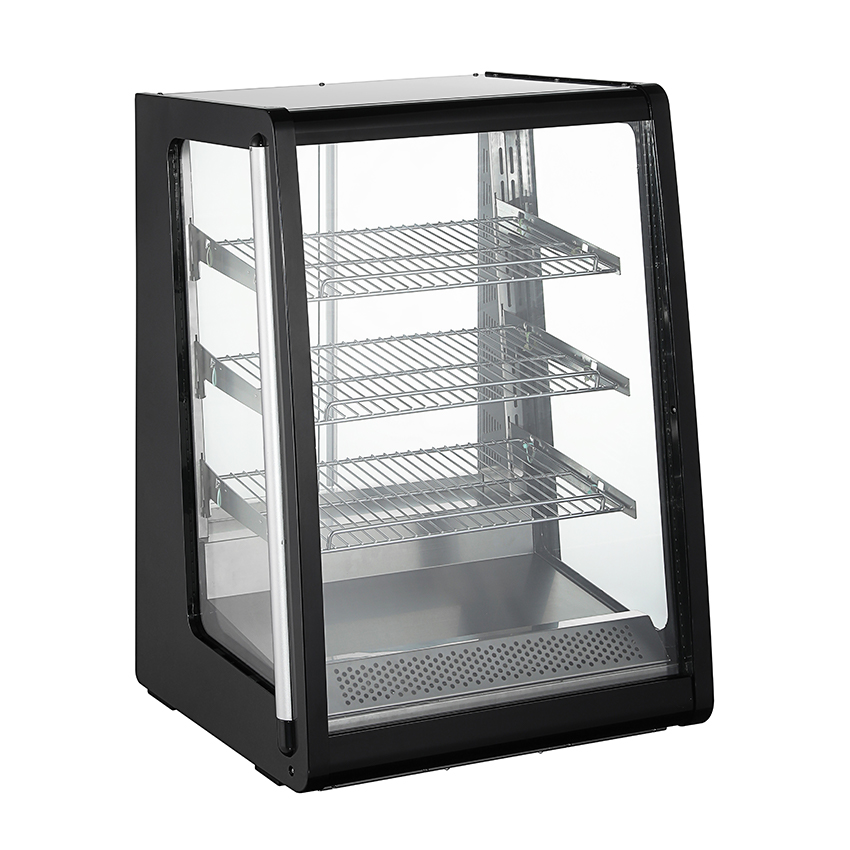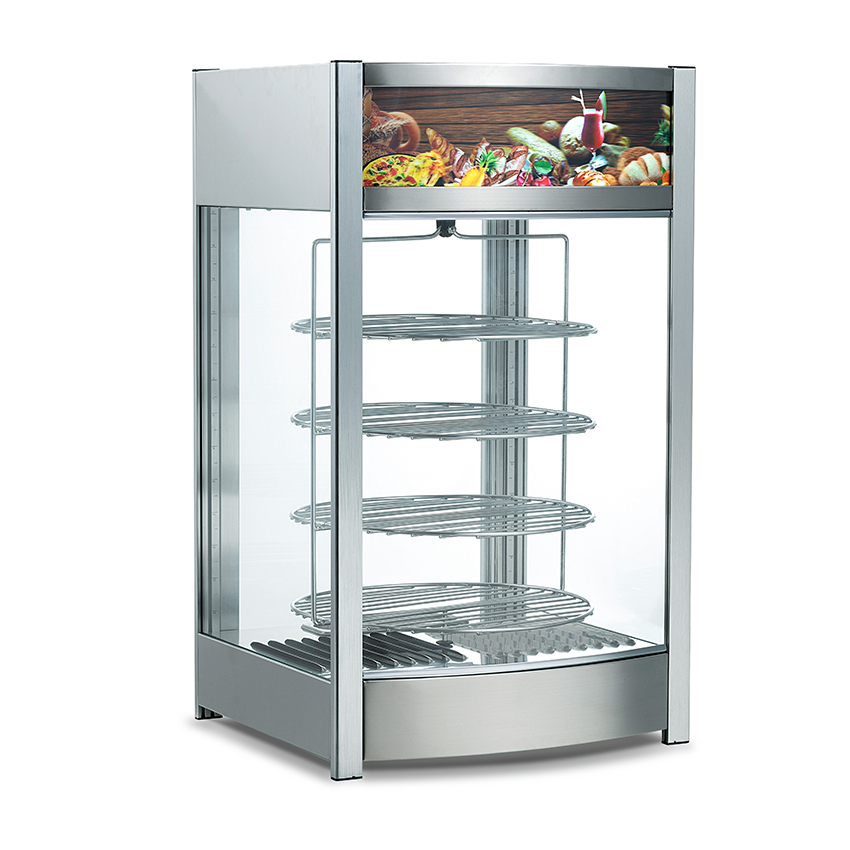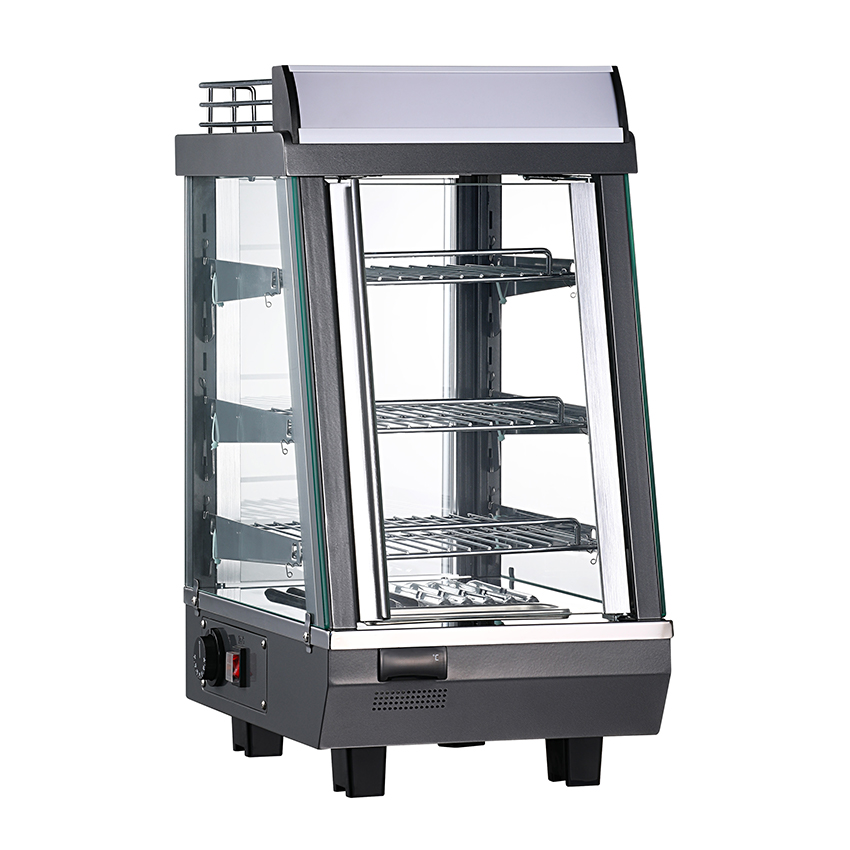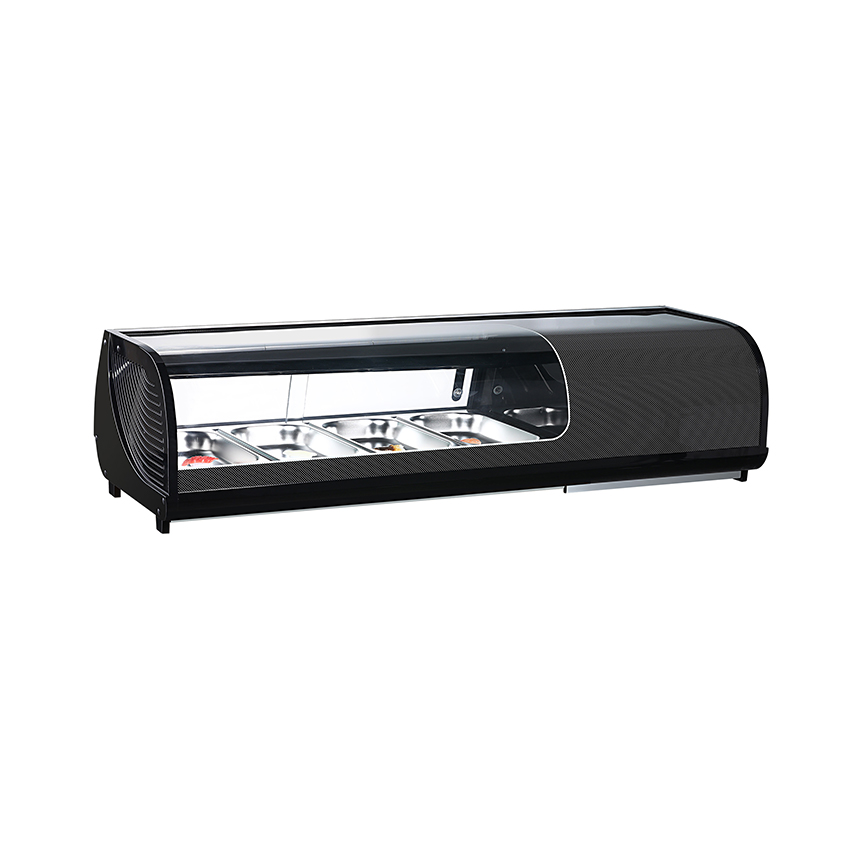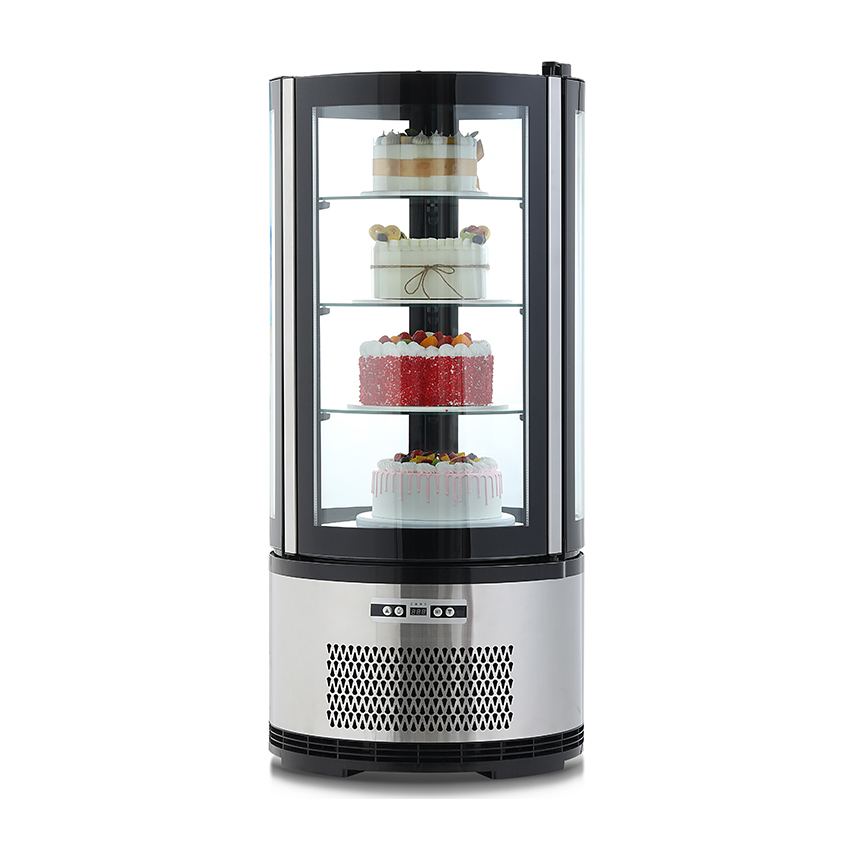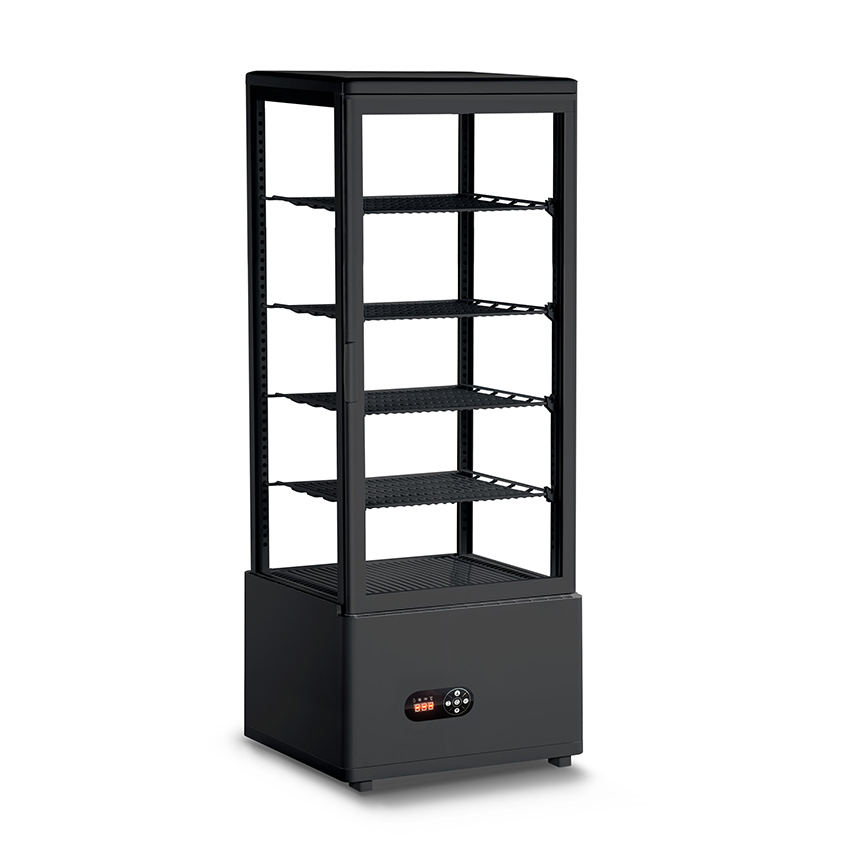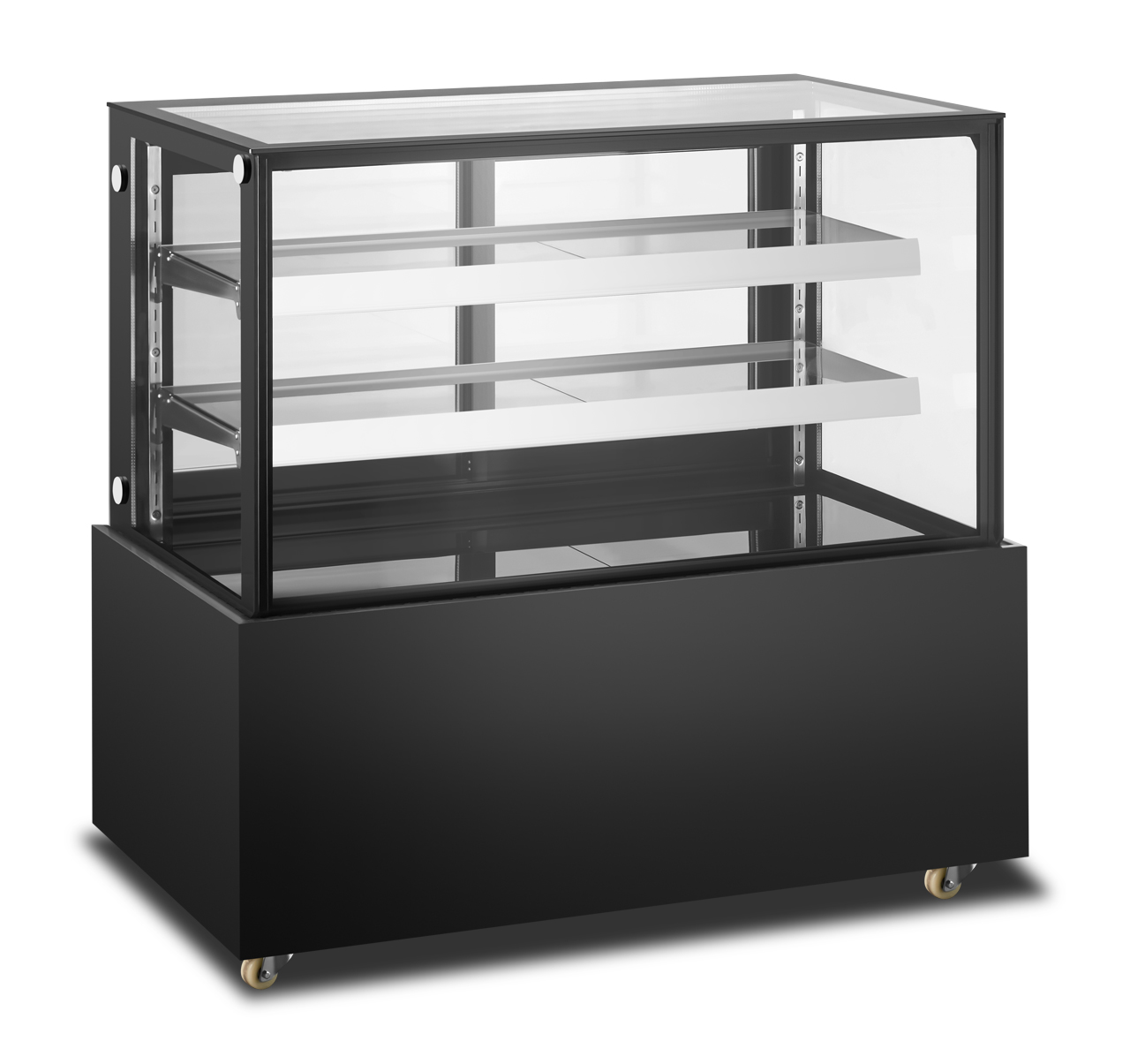1. Adjust the temperature gauge of the cake display cabinet:
| Adjustment | Specific Instructions | Recommendations/Range |
| Core Temperature Range | Optimal Temperature Range for Cake Display Cabinets | Usually between 2°C and 8°C |
| Summer Adjustment | When the ambient temperature is high, to reduce the load on the compressor, it is advisable to adjust to a higher setting (larger numbers) or a weaker cooling setting (smaller numbers). | Weak setting 2-3 (5-8°C) |
| Winter Adjustment | When the ambient temperature is low, to ensure effective cooling, it is advisable to adjust to a lower setting (smaller numbers) or a stronger cooling setting (larger numbers). | Level 4 (below 4°C) and above |
| Electronic Thermostat | Temperature settings are typically set using buttons (such as the SET button or up and down keys). | Directly setting the target temperature |
| Mechanical Knob | Adjust by rotating the setting knob (e.g., 1-7). Higher numbers generally indicate lower temperatures. | Select the appropriate setting based on the season and ambient temperature. |
| Temperature Uniformity | Temperature differences may occur at different locations within the cabinet; actual measurement and adjustment are required. | Thermometers can be placed at different locations within the cabinet for measurement. |
| Defrosting | Some models require manual defrosting by pressing the defrost button. Automatic defrosting models do not require this operation. | Regular defrosting ensures cooling efficiency. |
2. Adjustment Steps and Methods
The adjustment methods vary slightly depending on the type of cake display cabinet, but generally follow the following logic:
Find the temperature control device:
Electronic thermostats: These typically feature a digital display and several buttons (commonly seen as SET, up arrow , down arrow,power button, and defrost button).
Mechanical knobs: These are typically a knob surrounded by numerical ranges (e.g., 0-7) or other indicators. Higher numbers typically indicate greater cooling intensity and lower temperatures inside the cabinet.
Electronic thermostats: After powering on the cabinet, press and hold or hold the SET button. The display will typically switch from the current temperature to the set temperature. Press the up or down arrows to adjust the temperature to your desired setting. After setting, the thermostat will automatically exit the setup mode and display the current temperature after a few seconds.
Mechanical knobs: Simply rotate the knob to the desired setting. For example, in summer when the ambient temperature is high, set the thermostat to the weakest setting (2-3, corresponding to approximately 5-8°C). In winter when the ambient temperature is low, set the thermostat to 4 (below 4°C) or higher. After adjusting the temperature, the display cabinet will need to run for a while (usually several hours) to stabilize at the newly set temperature. It's recommended to use a reliable thermometer placed in the middle of the display cabinet to verify the temperature. If you notice uneven temperatures between the top and bottom of the cabinet, adjustments may be necessary, or check to see if anything is blocking the air vents.
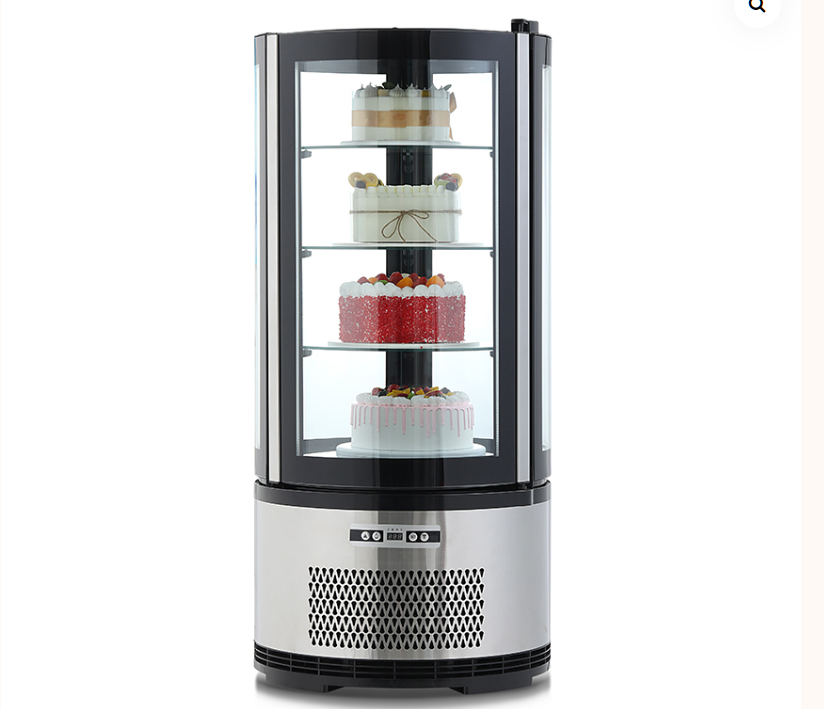
3. Adjusting Based on Season
Ambient temperature significantly impacts the efficiency of the display cabinet, so seasonal changes require appropriate adjustments:
Summer (high ambient temperature): The thermostat should be set to a low setting (2-3) (5-8°C). This is because high ambient temperatures make it difficult for the cabinet's temperature to drop, and prolonged operation of the compressor increases wear and energy consumption. Setting the thermostat to a low setting reduces compressor operating time, extending its lifespan and saving energy.
Winter (low ambient temperature): The thermostat should be set to setting 4 (below 4°C) or higher.
For specific reference: If the ambient temperature is below 16°C, adjust to setting 5; if it's below 10°C, adjust to setting 6 or 7. This is because the cold storage environment is lower in winter, making it easier for the refrigerator compartment to reach the set temperature. If the set temperature is too high, the system will start up too quickly, resulting in inadequate cooling and refrigeration.
4. Daily Maintenance and Precautions
Proper maintenance can extend the life of the display cabinet and ensure effective cooling:
Reduce the number and duration of door openings: Minimize the number of door openings and the time it takes to store or retrieve food to prevent excessive loss of cold air.
Regular Cleaning:
Condenser: Clean approximately every three months. Before cleaning, be sure to disconnect the power cord. Then, use compressed air to blow or wipe the surface with a dry cloth to remove dust. Never rinse with water.
Cabinet surface: Wipe with an absorbent cloth such as a towel or cotton cloth. Avoid using corrosive liquids such as soapy water and detergent to prevent damage to the paint finish.
Proper Placement: Display cabinets should be placed in a cool, well-ventilated area. Allow adequate space for heat dissipation at the top, sides, and back. Food should not be overfilled or overcrowded, as this will affect air circulation and preserve freshness, while increasing power consumption. Do not place hot food in the display cabinet: Hot food must cool to room temperature before placing it in the display cabinet. Otherwise, the temperature inside the cabinet will rise sharply, increasing power consumption and overloading the compressor.
5. Troubleshooting Common Problems
The temperature will not drop or reach the set point: Check whether the ambient temperature is too high, whether there is sufficient heat dissipation space, and whether the condenser is excessively dusty and needs to be cleaned. If the problem persists, contact a professional for inspection.
Uneven temperature inside the cabinet: Try adjusting the position of the food and ensuring that the air vents are unobstructed. Do not place food directly in front of the air vents.
Display garbled characters or control malfunction: Try power cycling. If this does not work, the thermostat may be faulty and you should contact after-sales service or a professional.


 English
English русский
русский Español
Español Français
Français عربى
عربى italiano
italiano
